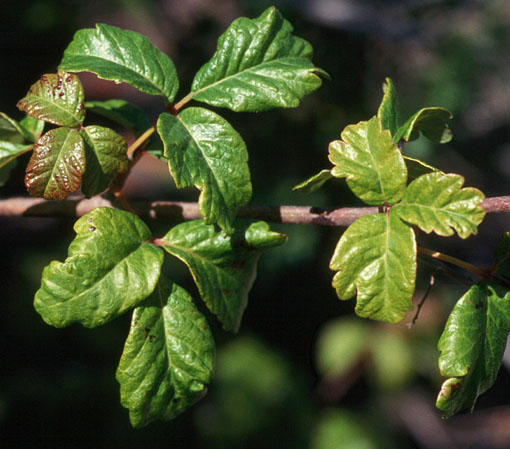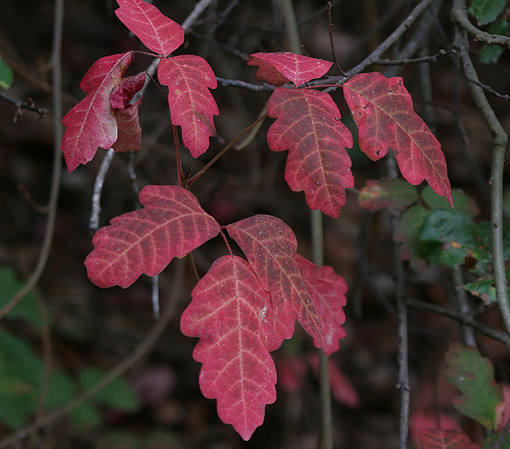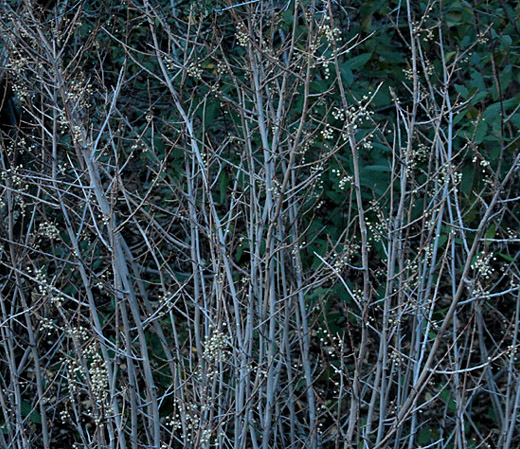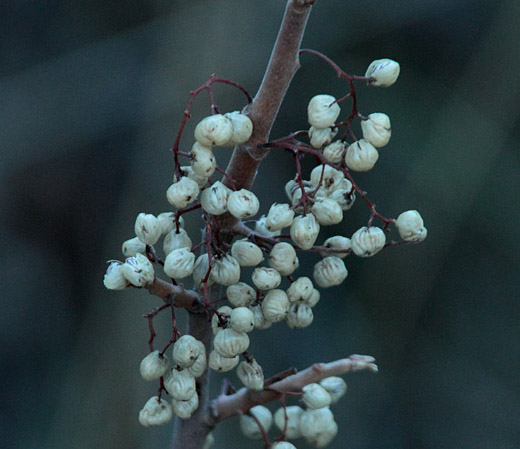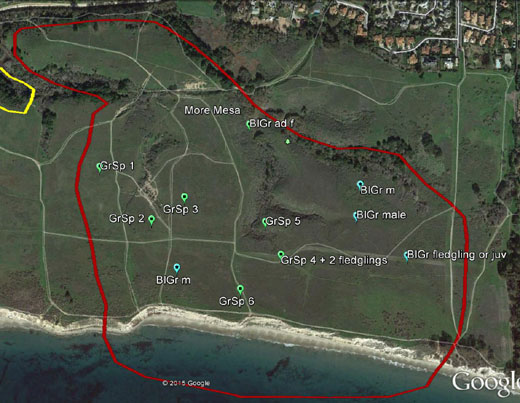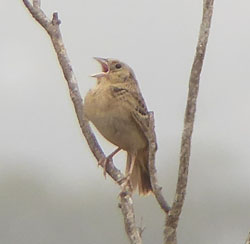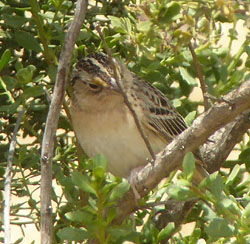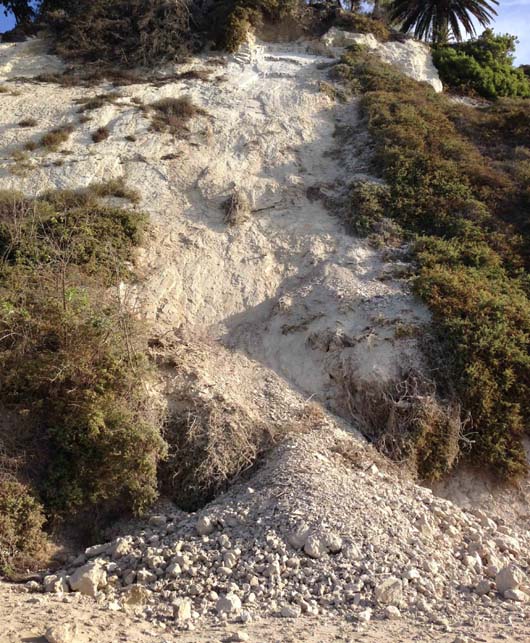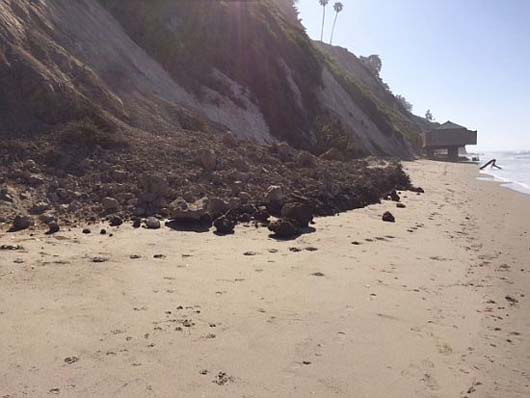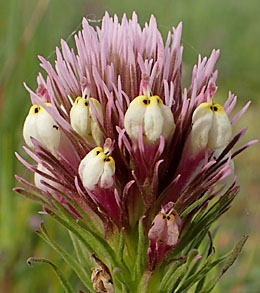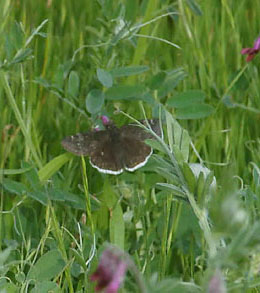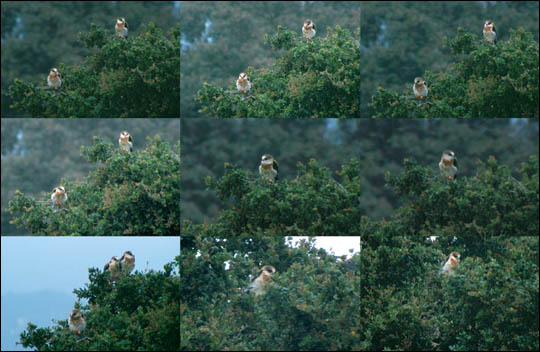An irritating reminder … Yet another manifestation of the drought concerns poison oak; harbinger of itchy rashes. If you have been out on More Mesa you may have noticed that our abundant poison oak populations have come up in profusion this year, and in spite of little water. And you may also be aware that poison oak being deciduous, its leaves normally turn red and die in the fall. However in this fourth year of the drought, the leaves began to turn red in mid June and are already dropping. Because poison oak branches and stems are as dangerous as the leaves, but harder to notice without their famous “Leaves of three, let them be” reminder, all who visit More Mesa need to exercise special caution much earlier in the season … like now!
Poison oak can grow in several forms; in open sunlight as a dense shrub, or in shaded areas as a ground or climbing vine. The three leaflets have scalloped edges, resembling (slightly) the leaves of a true oak and can be bronze, bright green, yellow-green or reddish depending on the season. If you have inadvertently wandered into poison oak:
- Remove your clothes as soon as possible
- Wipe the suspect area with alcohol
- Wash all exposed areas with cool running water. Use soap and water if possible … be sure to clean under fingernails
- Wash clothing and all objects that came into contact with the plants
- Bathe pets exposed to the plants.
